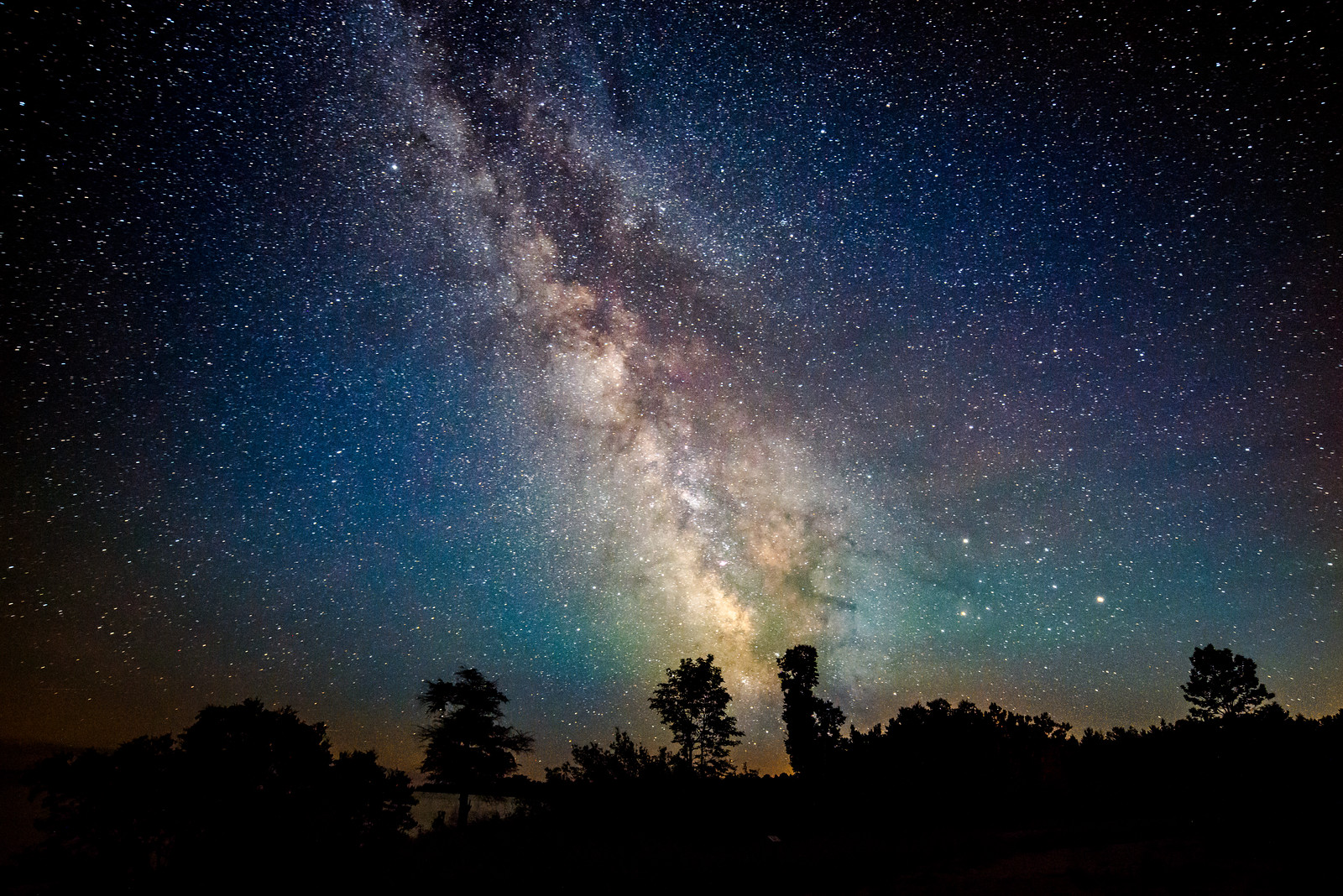By Andy Orf, Northern Door Astronomy Club
We experience seasons because the Earth’s axis, anchored by the North and South poles, is tilted. In the summer, as the Earth orbits the Sun, the North Pole tilts toward the Sun; in the winter, the North Pole tilts away from the Sun. On June 20th, the North Pole will be tilted the maximum 23 degrees toward the Sun, marking the onset of summer—the summer solstice—in the Northern Hemisphere.
In the month of June, the last quarter Moon appears on the second day. At this time, the Moon will rise at midnight in the eastern sky. The new Moon will occur on June 10th. The lunar orb will not be illuminated because it will be positioned between the Sun and Earth, creating a dark sky optimal for stargazing. The first quarter Moon will appear on June 17th. It sits overhead after sunset and then sets at midnight in the western sky. The full Moon will occur on June 24th, dazzling in its brightness but an obstacle to viewing the stars.

Because the Earth rotates on its axis every 24 hours in a counter-clockwise direction from West to East, we see the stars rotate in the evening sky from East to West. We also see the Moon and the planets move in the evening sky from East to West. June 2021 is not an optimal month to view the planets. Venus and Mercury, however, are visible for a few hours low in the western sky, after sunset, before they sink below the horizon. Jupiter and Saturn can be seen rising in the eastern sky about one hour before sunrise. You also may be able to see Mars early in the evening near the bright star Pollux in the Gemini constellation. Mars will then disappear for the summer, as Gemini is a winter constellation.
Because the Earth rotates around the Sun every 365 days in a counter-clockwise direction, our view of the stars and the constellations changes from month to month. We see stars and constellations in the summer that are different than those we see in the winter. But the position of the planets in relation to the stars is constantly changing. The position of the stars seems fixed, but only because they are so far away. All the planets rotate around the Sun in the same counter-clockwise direction along a plane of the Sun called the ecliptic.
If you are a newcomer to night sky viewing, I offer two suggestions: (1) get a star map and learn how to identify the constellations (skymaponline.net is a good source); (2) join the Northern Door Astronomy Club. Membership comes with no dues and no obligations. Most if not all club members are also members of NWS. If you are interested in joining the Northern Door Astronomy Club, contact Beth Bartoli, the naturalist at Newport State Park, at 920.854.2500 or email her. Beth will put you on the mailing list so you can be advised of upcoming club events.
Photo Credits:
Night Sky over Newport: © Denny Moutray (banner image)
Phases of the Moon: Fresheneesz~commonswiki, via Wikimedia Commons




